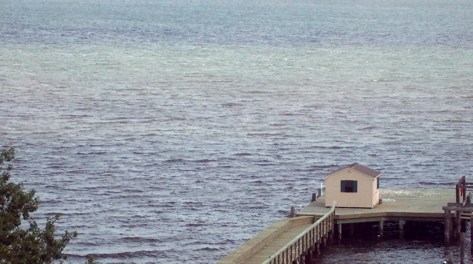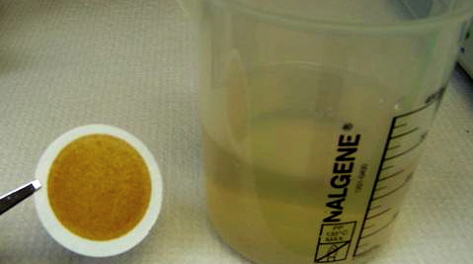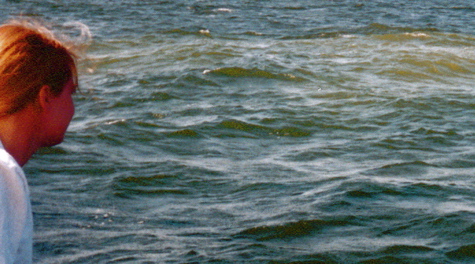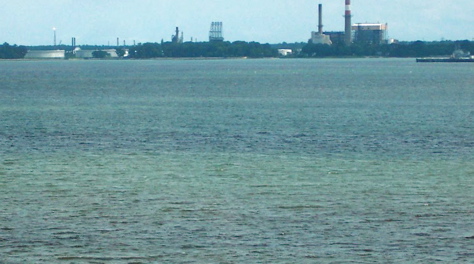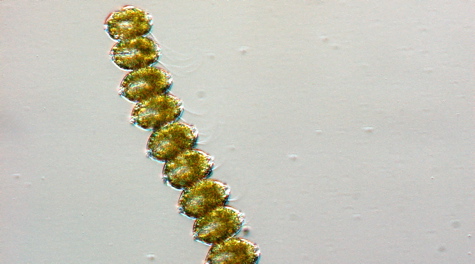VIMS researchers monitor 'red tides' in local waters
Researchers at the Virginia Institute of Marine Science continue to monitor the algal blooms that have been discoloring local waters during the last few weeks. These “red tides” occur in Chesapeake Bay every summer, but have appeared earlier and across a wider area than in years past, likely due to last winter’s warmth and this summer’s heat.
Red tides are caused by dense blooms of tiny marine plants called algae that contain reddish pigment. Algae are normal components of all aquatic environments, but can produce what is known as a “harmful algal bloom” or “HAB” when they bloom in significant numbers and generate toxic byproducts. HABs can be harmful to both marine organisms and human health.
Professor Kim Reece, a member of Virginia’s Harmful Algal Bloom Task Force, is the focal point for HAB research and monitoring at VIMS. Reece, fellow VIMS professor Wolfgang Vogelbein, and other colleagues at VIMS partner with representatives from the Virginia Department of Health, the Marine Resources Commission, the Department of Environmental Quality, and Old Dominion University to track the appearance of algal blooms within Virginia waters and to determine whether the bloom organisms pose any threat to marine life or human health.
There is currently no evidence of harm from the recent blooms, which were first observed in early to mid-July, 2 to 3 weeks earlier than in recent years. Study of samples taken in the York River near VIMS’ Gloucester Point campus show that they comprise dense aggregations of Cochlodinium polykrikoides, a single-celled marine dinoflagellate.
Reece says “Blooms of this and closely related species may harm oyster larvae and other marine life, and are associated with fish kills and economic loss in Japan and Korea, but we’ve had no reports of any of these effects in local waters this year.” Fish and crab kills reported in the Bay during Cochlodinium blooms in previous years are likely due to low levels of dissolved oxygen, which are associated with blooms of many different species and occur when the algal cells die, sink, and decay.
Anyone who has observed a patch of water that is colored red or mahogany and is concerned should contact Virginia's toll-free Harmful Algal Bloom hotline at (888) 238-6154.
Algal Blooms in Perspective
Algal blooms are not uncommon in lower Chesapeake Bay during the spring and summer. Algae respond to the same conditions that encourage plant growth on land, and thus are most likely to form blooms when waters are warm and nutrient rich. Excess nutrients from farms and yards, sewage treatment plants, and the burning of fossil fuels are one of the biggest challenges facing the Bay.
“There are three main ingredients for an algal bloom,” explains Reece. “Warm waters that favor rapid growth of algal cells, abundant nutrients to fertilize that growth, and wind and tidal-driven currents to confine the cells into a dense aggregation. Our recent heat and rains provide ideal conditions for bloom formation, so we’ll continue to monitor whether the ongoing blooms become a cause for any concern.”
Sampling & Monitoring
Real-time monitoring of algal blooms is not an easy task, as it involves developing and applying DNA tests to rapidly identify—from among a huge variety of mostly benign microorganisms—the particular algal species that have been observed to produce toxins. Development of these molecular DNA assays is a prime focus of Reece’s research at VIMS.
Monitoring also requires daily collection of water samples from all across lower Chesapeake Bay. Analysis of these samples at VIMS shows that Cochlodinium is currently blooming in the York, James, Elizabeth, and Lafayette rivers; Mobjack Bay; and near the mouth of the Bay in the vicinity of the Hampton Roads Bridge Tunnel.
 Skip to main content
Skip to main content

